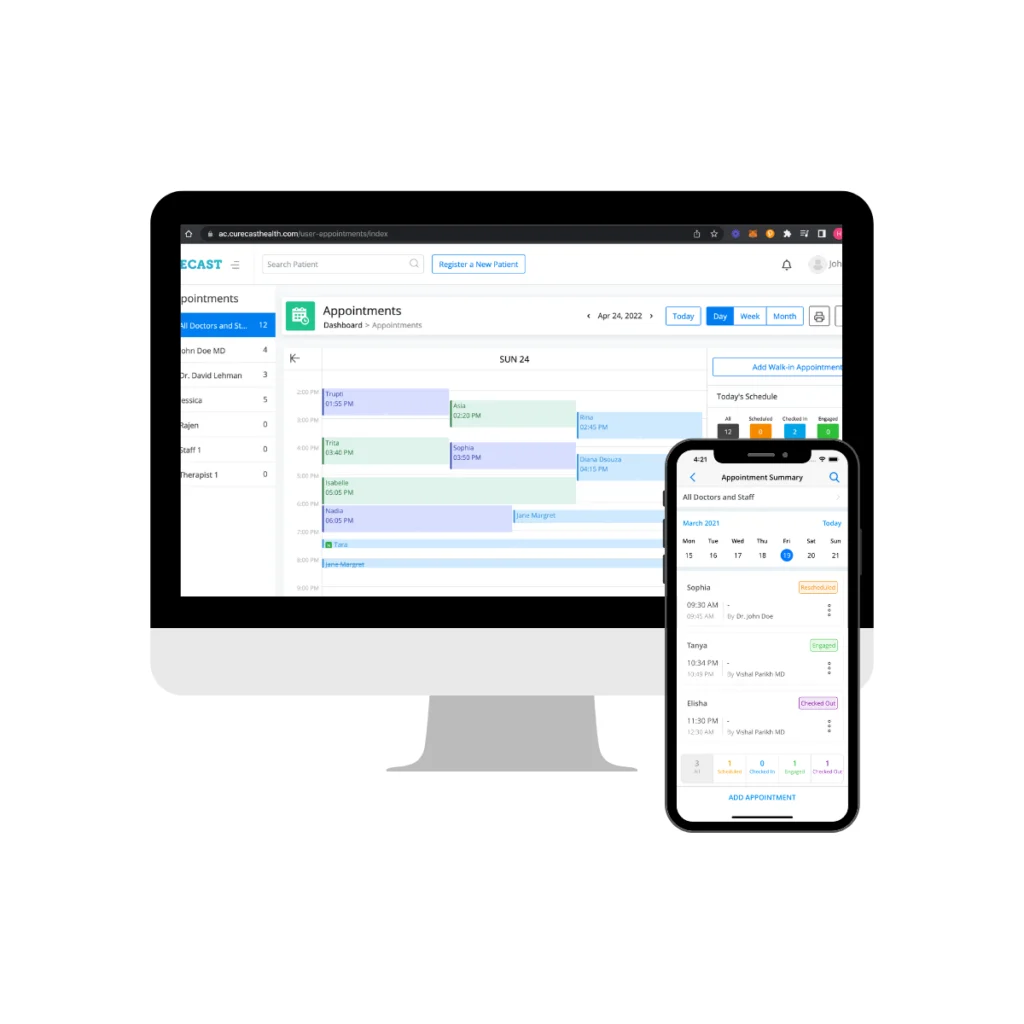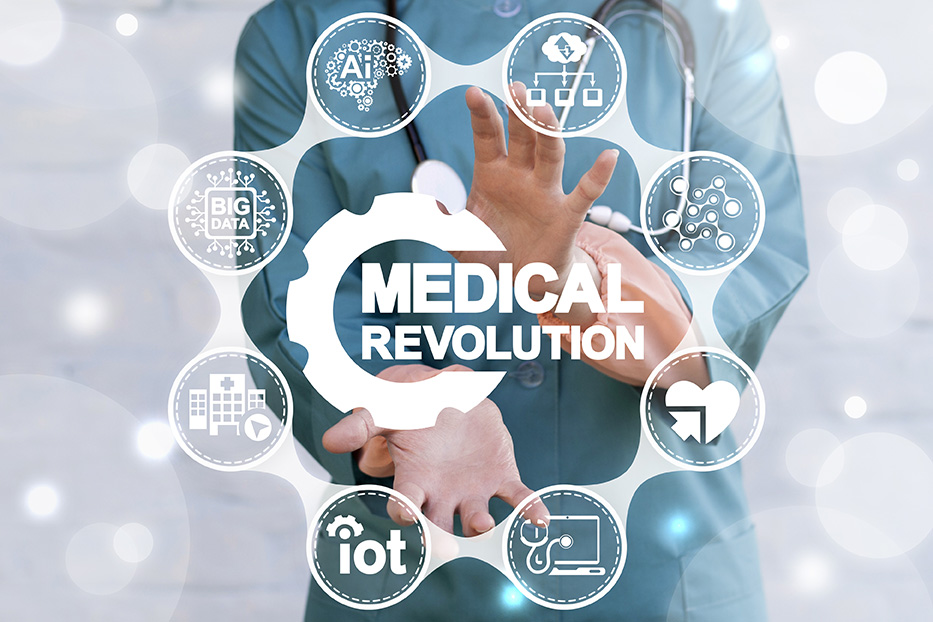
Revolutionizing Healthcare: The Impact of Software Solutions
In the dynamic realm of healthcare, a transformative wave is sweeping across the industry, propelled by the integration of innovative software solutions. This revolution is redefining the landscape for both healthcare providers and patients, introducing unprecedented efficiency, accessibility, and a renewed focus on patient-centered care.
From the fundamental reorganization of patient data with Electronic Health Record (EHR) software to the borderless realm of telemedicine consultations and the immersive training experiences offered by Virtual Reality (VR), the influence of software in healthcare is profound and far-reaching. Let’s delve into the pivotal types of healthcare software driving this metamorphosis.
Fiveteen of the Most Popular Types of Healthcare Software
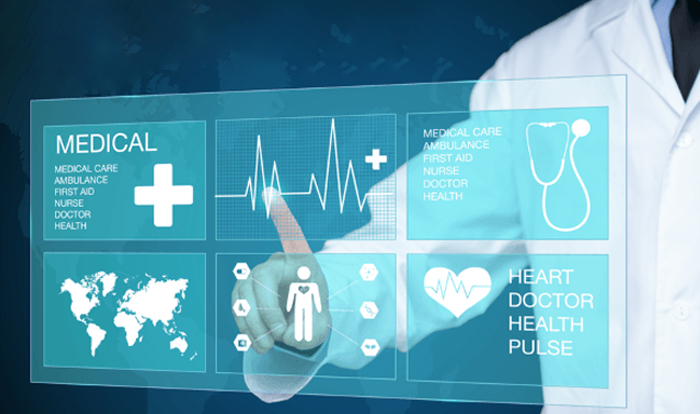
1. Electronic Health Record (EHR) Software
In the rapidly advancing realm of healthcare, Electronic Health Record (EHR) software stands as a cornerstone, reshaping how patient data is managed and accessed. Comparable to a CRM tailored for the medical industry, EHR systems play a pivotal role in collecting and organizing crucial patient information.
Key Functions
Comprehensive Patient Data
EHR software collects a spectrum of patient information, from medication history to past procedures.
Financial Modules
Many EHR programs include modules for invoicing and payments, enhancing the overall administrative process.
Patient Portals
Offering transparency, patients can access their consultation history, medical records, and prescriptions through dedicated portals.
Examples
The significance of EHR software lies not only in data management but in the potential to improve patient outcomes and streamline healthcare operations. As the digital transformation in healthcare continues, EHR remains at the forefront, shaping a more connected and efficient healthcare ecosystem.
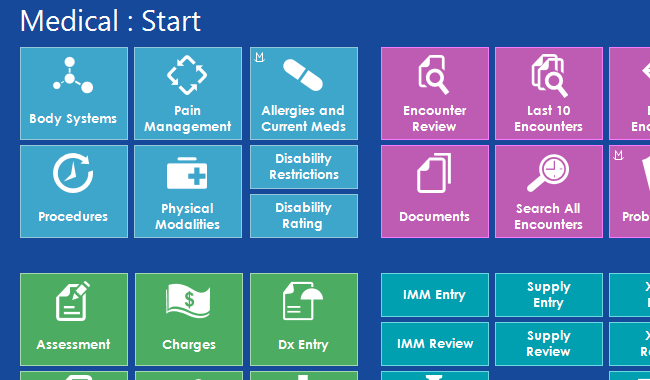
2. Medical Database Software
In the intricate web of healthcare technology, Medical Database Software emerges as a vital component, distinctively categorizing patient information by diseases rather than individual profiles. This specialized software serves a dual purpose: aiding physicians in making informed treatment decisions and providing a valuable resource for educational endeavors within the medical community.
Key Functions
Cross-Referencing Patient Cases
Medical database software allows doctors to cross-reference patient cases, facilitating better-informed treatment decisions.
Educational Resource
Serving as an educational tool, it enables medical professionals to delve into clinical cases related to specific diseases.
Disease-Centric Categorization
Categorizes patient data by disease, aiding doctors in educational purposes and collaborative research.
Examples
As healthcare professionals navigate the complex landscape of patient care, medical database software becomes an indispensable companion, offering insights that transcend individual patient profiles. This software’s unique approach fosters collaborative learning and informed decision-making, contributing to the ongoing evolution of healthcare practices.

3. Medical Research Software
Medical Research Software emerges as a crucial tool, contributing to education and knowledge-sharing within the medical community. Unlike patient-centric applications, this software is dedicated to supporting medical personnel in training and providing access to valuable research data.
Key Functions
Educational Resource
Medical research software serves as an educational platform, offering insights into clinical cases and supporting ongoing training for healthcare professionals.
Research Collaboration
Facilitating collaboration, this software enables medical professionals to share research findings and contribute to the collective knowledge base.
Data Management
Efficiently organize and manage vast amounts of medical data for research purposes, ensuring accessibility and accuracy.
Examples
As the healthcare landscape advances, the role of medical research software becomes increasingly significant, fostering a culture of continuous learning and collaboration among medical practitioners.
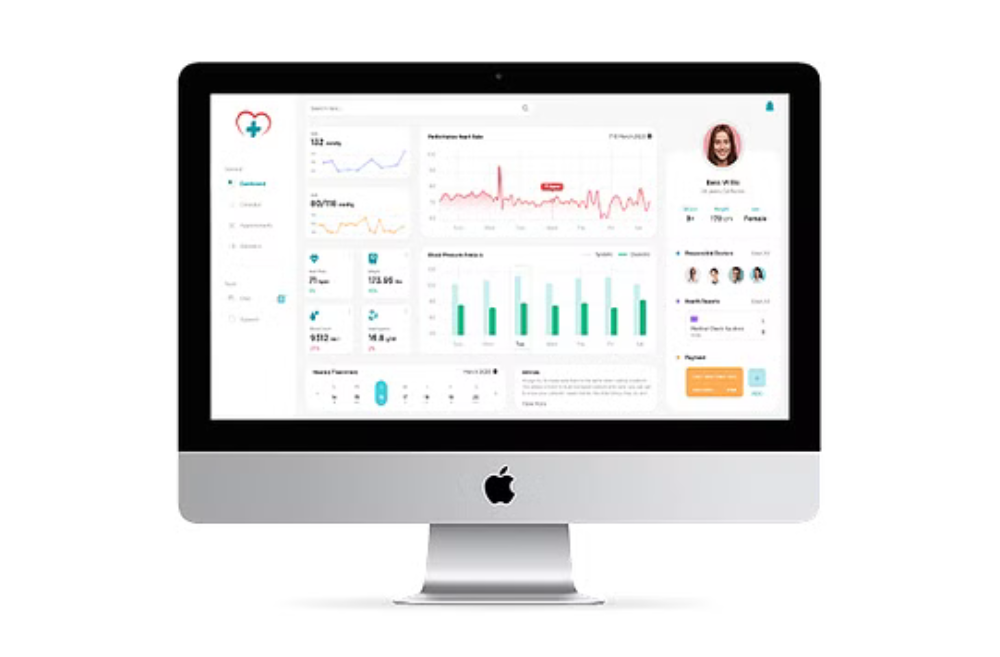
4. Medical Diagnosis Software
In the realm of healthcare technology, Medical Diagnosis Software emerges as a key player, contributing to the efficiency and accuracy of diagnostic processes. Designed to facilitate information exchange among healthcare professionals, this software empowers doctors to collaboratively enhance decision-making for accurate treatment outcomes.
Key Functions
Anonymized Patient Records Exchange
Medical diagnosis software enables doctors to share anonymized patient records, fostering collaboration and reducing information gaps.
Artificial Intelligence Integration
Advanced solutions leverage artificial intelligence (AI) to analyze extensive patient data, aiding doctors in generating precise and timely diagnoses.
Patient Empowerment Apps
These apps empower individuals to assess symptoms and determine the urgency of medical attention, particularly notable during events like the COVID-19 pandemic.
Examples
As the healthcare landscape embraces digital advancements, Medical Diagnosis Software plays a crucial role in elevating diagnostic capabilities, promoting collaboration, and providing individuals with valuable tools for preliminary self-assessment. The fusion of technology and healthcare continues to reshape the industry, with medical diagnosis software paving the way for improved patient care.
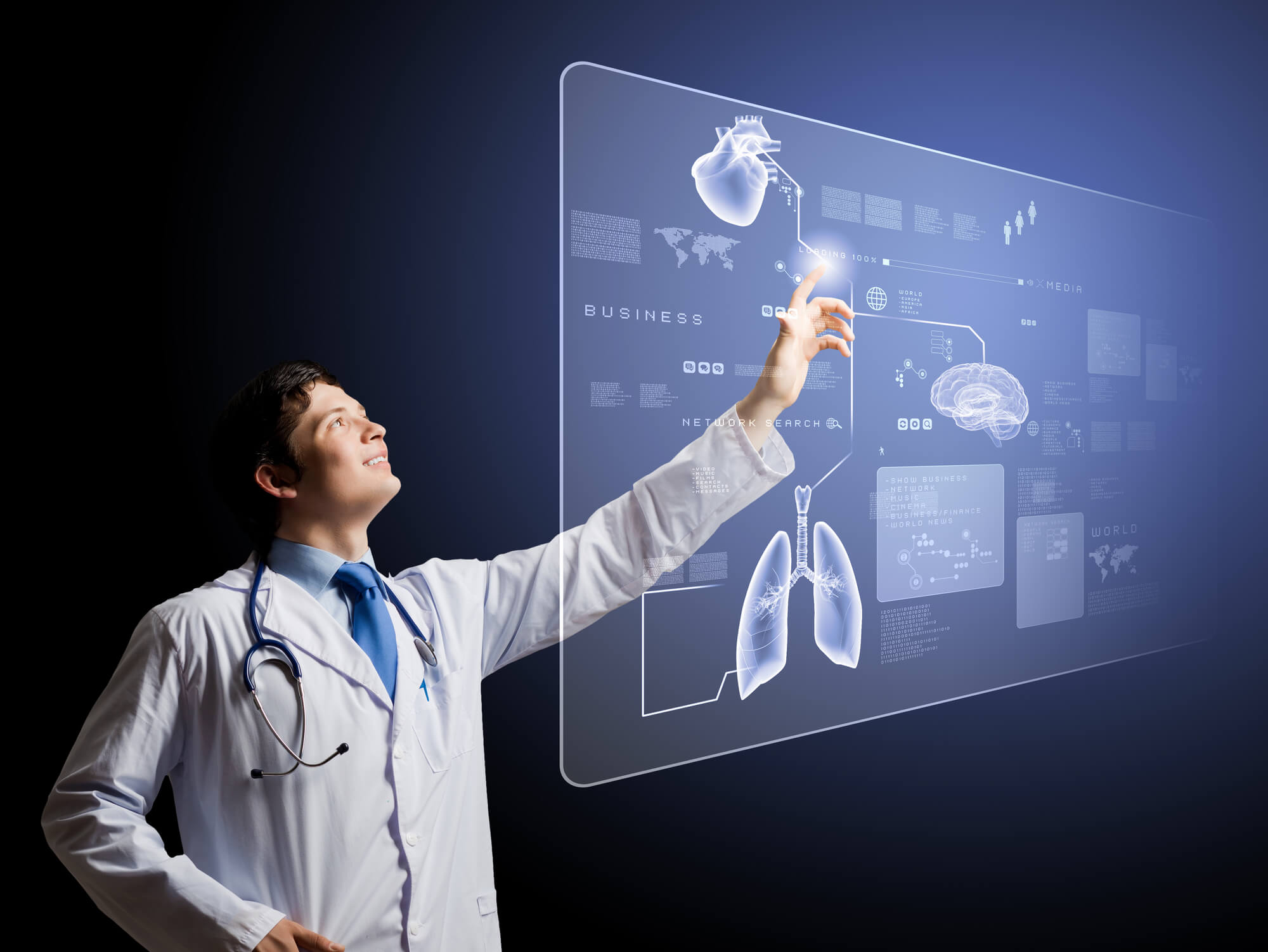
5. Medical Imaging Software
Medical Imaging Software serves as a technological marvel, transforming how healthcare professionals visualize and interpret diagnostic results. Much like an artist crafting a masterpiece, this software allows for intricate examination, planning of surgeries, and the creation of detailed 3D models.
Key Functions
Visualization of Examination Results
Enables healthcare providers to interpret MRI/CT/PET scans with precision.
3D Modeling
Particularly crucial in dentistry, where orthodontists can plan treatments by examining realistic 3D models of a patient’s dentition.
Patient Outcome Presentation
Enhances communication with patients by visually presenting examination outcomes, fostering a better understanding of diagnoses and treatment plans.
Examples
Medical imaging software not only enhances diagnostics but also contributes to the advancement of treatment planning. Its significance extends beyond visual representation, playing a pivotal role in ensuring accurate and personalized healthcare interventions. In an era where precision is paramount, medical imaging software stands as an indispensable tool in the hands of healthcare professionals.

6. E-prescribing Software
E-prescribing software marks a significant stride in modern healthcare, revolutionizing how doctors manage prescriptions and improving the overall patient experience. Comparable to a digital prescription pad, this software introduces efficiency and accuracy into the prescription process.
Key Functions
Prescription Management
E-prescribing software enables doctors to create, renew, or cancel prescriptions seamlessly, enhancing the prescription lifecycle.
Online Drug Ordering
For added convenience, some applications allow patients to place necessary drug orders directly from their chosen pharmacy.
Data Security
With minimal information loss risks, these platforms store prescription data securely online, contributing to a more reliable healthcare infrastructure.
Examples
E-prescribing software not only simplifies prescription workflows but also aligns with the broader digitization trends in healthcare. As countries transition to electronic prescriptions, this software fosters a more connected and efficient approach to medication management, ultimately benefiting both healthcare providers and patients.

7. Telemedicine Software
Telemedicine software emerges as a transformative force, leveraging digital connectivity to redefine patient-doctor interactions. In an era where virtual solutions are increasingly prevalent, telemedicine stands out for its convenience and accessibility.
Key Functions
Connecting Patients and Healthcare Providers
Telemedicine software enables seamless online appointments, connecting healthcare professionals with patients for convenient consultations at home via web browsers or mobile apps.
Comprehensive Solutions
Comprehensive approach ensures a holistic healthcare experience, benefitting both providers and patients with a unified and integrated system.
Booming Market
Telemedicine, set to reach a $64 billion market value in the US by 2025, gains momentum for its convenient digital healthcare services globally.
Examples
As telemedicine continues to gain momentum, it plays a crucial role in fostering accessible and efficient healthcare. Beyond the current global circumstances, the convenience and flexibility offered by telemedicine software position it as a key player in shaping the future landscape of medical consultations.

8. Appointment Scheduling (Booking) Software
Appointment scheduling software has become an indispensable tool for healthcare facilities, streamlining the complex process of managing patient appointments. Similar to other specialized healthcare software, appointment scheduling applications aim to enhance efficiency and improve the overall patient experience.
Key Functions
Online Appointment Management
Patients benefit from the convenience of scheduling appointments via dedicated apps or websites, reducing the need for manual bookings.
Automated Reminders
Both doctors and patients receive timely notifications, reducing no-shows and optimizing the utilization of healthcare resources.
Calendar Format
Administrative staff gains a detailed overview of doctors’ workloads, allowing for better resource allocation.
Examples
Appointment scheduling software has transcended traditional appointment books, offering a more organized and accessible approach to managing patient appointments. The integration of such tools reflects the ongoing efforts to streamline healthcare processes and improve accessibility for patients. As the digital landscape continues to evolve, appointment scheduling software remains a crucial component in fostering efficient and patient-centric healthcare services.
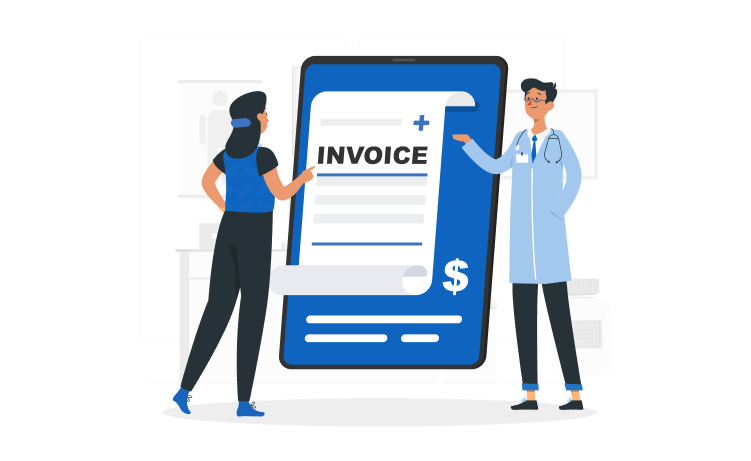
9. Medical Billing Software
In the intricate web of healthcare management, Medical Billing Software emerges as a crucial element, facilitating the financial heartbeat of medical facilities. Similar to an adept financial conductor, this software orchestrates the complex symphony of patient invoices, payments, and overall financial operations.
Key Functions
Financial Oversight
Medical billing software provides a meticulous oversight of financial transactions, ensuring accuracy in invoicing, receipt tracking, and insurance claims.
Integration Capability
Often seamlessly integrated into larger systems, such as EHR or hospital management software, it harmonizes with other healthcare components.
Operational Efficiency
By automating financial tasks, it reduces the burden on administrative staff, allowing them to focus on other critical aspects of healthcare management.
Examples
Amidst the intricate tapestry of healthcare finances, medical billing software serves as the silent guardian, ensuring the economic health of medical institutions. It’s not just a tool for managing invoices; it’s a linchpin in the financial stability of the healthcare ecosystem. As the healthcare landscape evolves, the role of medical billing software remains steadfast, contributing to the seamless functioning of healthcare institutions worldwide.

10. Hospital Management Software
Hospital management software emerges as a central force in optimizing internal processes and elevating overall healthcare efficiency. Functioning through dual interfaces—one for administrative processes and another for patients—this software is designed to enhance various aspects of clinic operations.
Key Functions
Comprehensive Clinic Management
From initial patient contact to treatment regimens and ongoing interactions, hospital management software streamlines all essential clinic processes.
Resource Management
Ensures medical facilities have the necessary resources and aids in development forecasting.
Increased Productivity
Reduces routine tasks, allowing clinics to focus on delivering quality patient care.
Examples
The role of hospital management software extends beyond mere automation; it acts as a catalyst for increased productivity and improved customer service quality. In an era where seamless operations are paramount, this software becomes instrumental in the effective functioning of medical institutions.
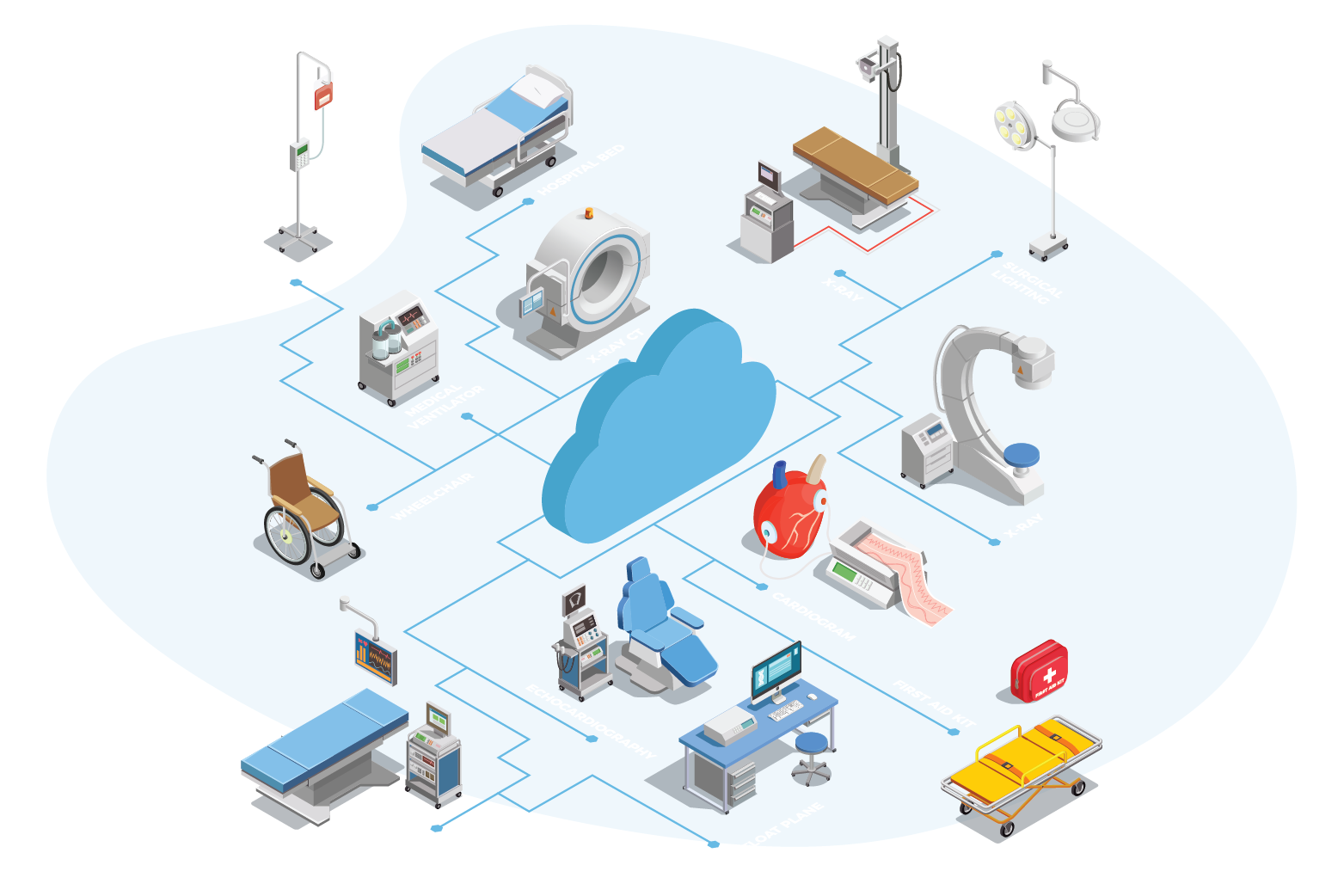
11. Medical Equipment Management Software
Medical equipment management software emerges as a vital component in the orchestration of healthcare facilities, ushering in efficiency and precision in equipment oversight. Comparable to a meticulous conductor in an orchestra, this software ensures that each piece of medical equipment plays its role seamlessly.
Key Functions
Automated Inventory Oversight
Software like Sortly automates stock monitoring, sparing healthcare staff from manual tracking of various equipment and consumables.
Maintenance Scheduling
These systems assist in scheduling and tracking maintenance tasks, ensuring that equipment is in optimal condition when needed.
Notifications and Alerts
Medical equipment management software sends timely notifications, prompting responsible personnel for restocking or maintenance, preventing disruptions in healthcare delivery.
Examples
In the intricate dance of healthcare operations, medical equipment management software takes center stage, ensuring the smooth rhythm of care delivery. As technology evolves, this software becomes increasingly indispensable, allowing healthcare facilities to optimize resources and focus on delivering quality patient care.
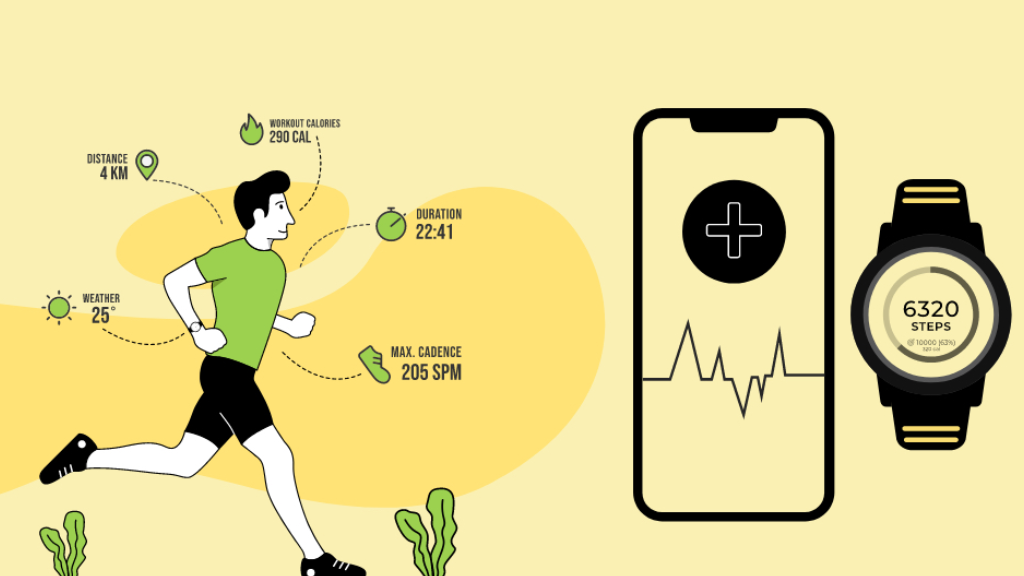
12. Health Tracking Apps
In the era of personal wellness, Health Tracking Apps have emerged as essential companions for individuals keen on monitoring and improving their health. These applications, often integrated with wearable devices like fitness trackers and smartwatches, serve as valuable tools for users to stay informed about various aspects of their well-being.
Key Functions
Fitness Monitoring
Track your physical activity, from steps taken to calories burned, offering insights into your fitness journey.
Diet Management
Apps like Fitatu Calorie Counter help users manage their diet by providing nutritional information and meal planning features.
Mental Health
Stress reduction and meditation apps, such as Calm and Shine, contribute to mental well-being by offering guided sessions.
Examples
Health Tracking Apps have become an integral part of the digital health landscape, empowering individuals to take a proactive approach to their well-being. As technology continues to advance, these apps play a crucial role in promoting a holistic and self-aware approach to health and fitness.
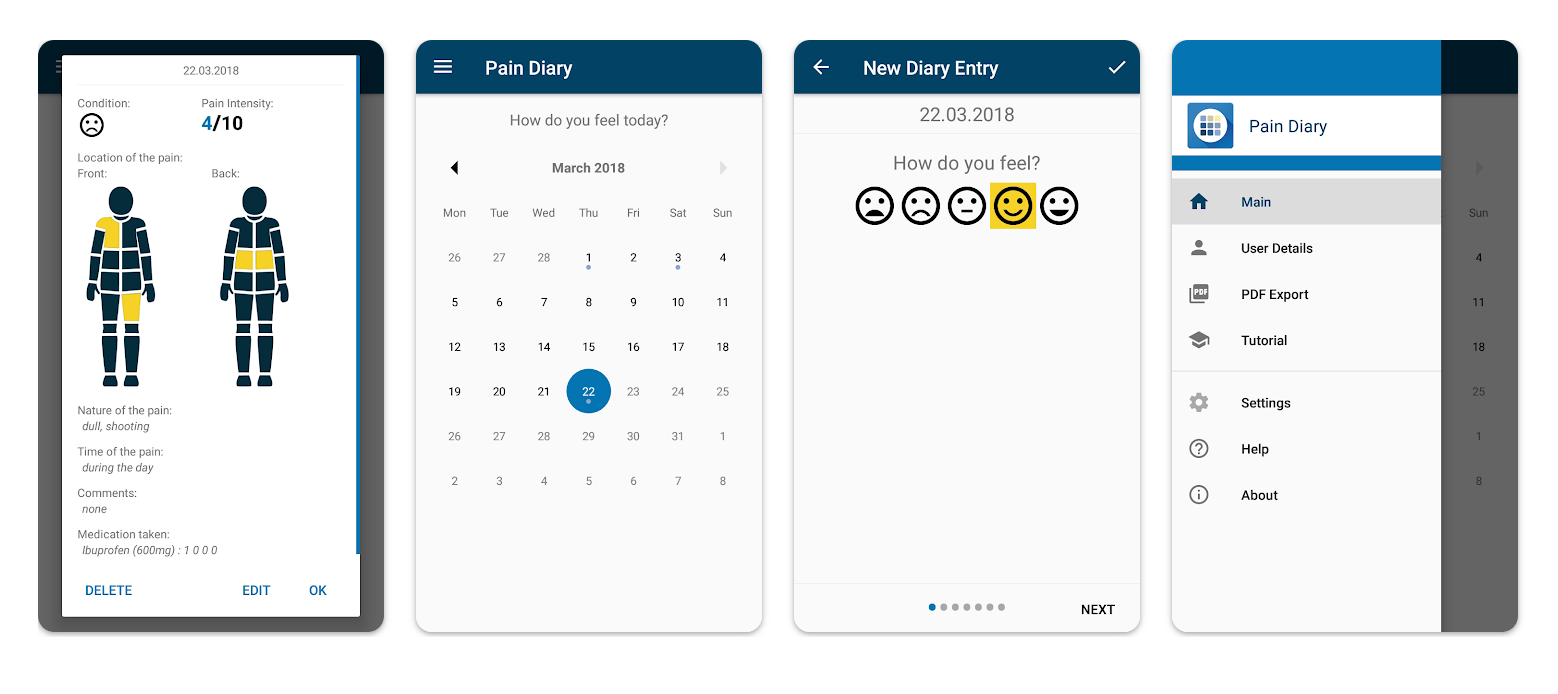
13. Personal Health Record Software (Medical Diaries)
Personal Health Record (PHR) software, often referred to as medical diaries, represents a vital tool in the realm of patient-centric healthcare. Unlike general health tracking apps, PHR software serves a distinct purpose – the meticulous monitoring of diseases and symptoms.
Key Functions
Disease-focused Tracking
PHR software categorizes data around specific diseases, enabling in-depth analysis for both patients and healthcare providers.
Comprehensive Recording
Acting as digital medical diaries, these software solutions allow users to document symptoms, medications, and treatment plans.
Integration with Healthcare Systems
Some PHR apps seamlessly integrate with hospital or clinic software, fostering better communication between patients and healthcare professionals.
Examples
In the evolving landscape of healthcare software, PHR applications serve as personal health journals, offering users a dedicated space for disease-specific monitoring. By facilitating transparent communication between patients and medical professionals, PHR software contributes to a more collaborative and informed approach to healthcare. As the industry embraces patient empowerment, these digital diaries become instrumental in promoting active involvement in one’s health journey.
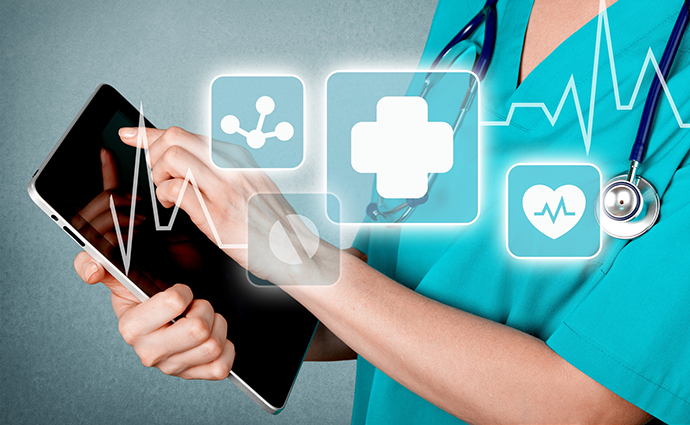
14. Remote Patient Monitoring (RPM)
Remote Patient Monitoring (RPM) emerges as a transformative force in modern healthcare, extending the boundaries of traditional patient care. This innovative technology allows healthcare providers to collect vital patient data beyond the confines of clinics and hospitals, ushering in a new era of healthcare accessibility.
Key Functions
Heart Rate Monitors
Track and record patients’ heart rates, offering valuable insights for cardiac health.
Wearable ECG Monitors
Provide continuous monitoring of heart activity, enabling early detection of irregularities.
Glucose and Blood Oxygen Level Meters
Essential for managing conditions like diabetes, ensuring timely interventions.
Examples
Especially beneficial for individuals with chronic diseases, RPM technology has significantly improved the efficiency and efficacy of in-home healthcare services. This shift from traditional healthcare models not only ensures timely interventions but also empowers patients to actively participate in their own health management.
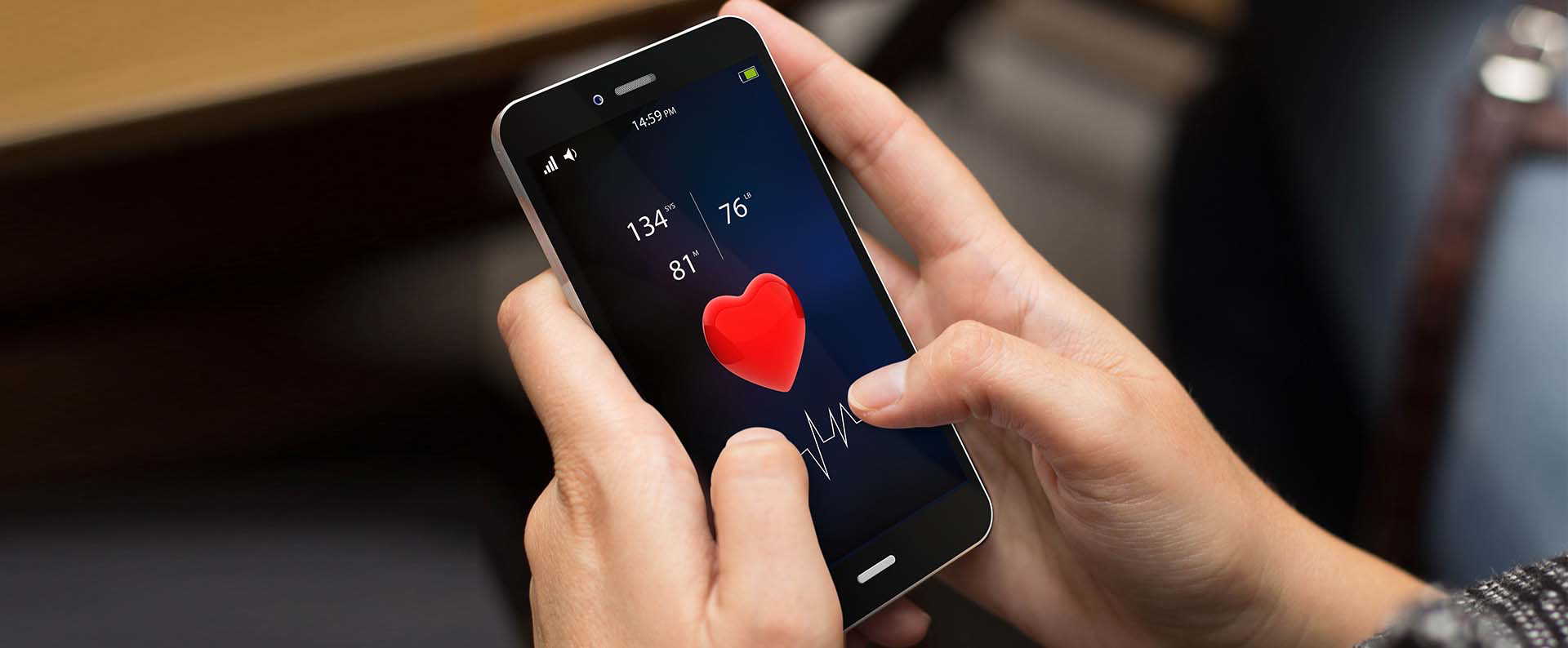
15. Mobile Health (mHealth) Apps
Mobile Health (mHealth) apps have emerged as dynamic tools, leveraging the ubiquity of smartphones and wearable devices to enhance healthcare accessibility. In a world where digital solutions are becoming synonymous with efficient healthcare, mHealth apps play a vital role in empowering individuals and connecting them with personalized health information.
Key Functions
Remote Monitoring
mHealth apps enable users to remotely monitor various health indicators, such as heart rate, body temperature, and sleep patterns.
IoT Integration
Many apps seamlessly integrate with IoT devices, providing a holistic approach to health tracking.
Diverse Categories
From fitness tracking apps like 8fit to diet management tools such as Fitatu Calorie Counter, mHealth apps cater to diverse health and wellness needs.
Examples
The global mHealth industry, reflects the increasing reliance on these apps for personal health management. As users embrace the convenience of digital health tracking, mHealth apps contribute to the broader landscape of healthcare software, reinforcing the shift towards patient-centric and data-driven healthcare solutions.
Conclusion
In the ever-evolving landscape of healthcare software, the diverse array of solutions plays a pivotal role in reshaping patient care and optimizing medical operations. From Electronic Health Record (EHR) systems streamlining patient information to Telemedicine Software providing convenient online consultations, the impact of these technologies is undeniable.
As we navigate through the realms of appointment scheduling, medical billing, and hospital management, the seamless integration of these software types enhances the overall efficiency of healthcare facilities. For instance, platforms like Availity automate day-to-day operations, streamlining everything from accounting to claims processing.
Furthermore, the emergence of innovative technologies, such as Virtual Reality (VR) Training & Simulation, signifies a paradigm shift in healthcare education. The ability for medical professionals to refine skills remotely in a cost-effective manner heralds a new era of continuous learning.
In the age of remote patient monitoring and health tracking apps, healthcare is becoming more personalized and accessible. Remote Patient Monitoring (RPM) technology, encompassing wearable devices and real-time monitoring, offers significant strides in chronic disease management.
In essence, these 15 types of healthcare software contribute to the overarching goal of making medical services more efficient and patient-centered. As the healthcare industry continues to embrace digital solutions, the potential for innovation and improvement in healthcare delivery remains boundless.
This exploration of healthcare software types offers a glimpse into the transformative power of technology within the medical realm. Each category serves a specific purpose, addressing unique challenges and contributing to the overarching goal of advancing healthcare services into the future.
Last News
Best Medical Spa Software
Why is it important to have quality medical spa software? In the dynamic realm of…
15 Types of Healthcare Software
Revolutionizing Healthcare: The Impact of Software Solutions In the dynamic realm of healthcare, a transformative…

